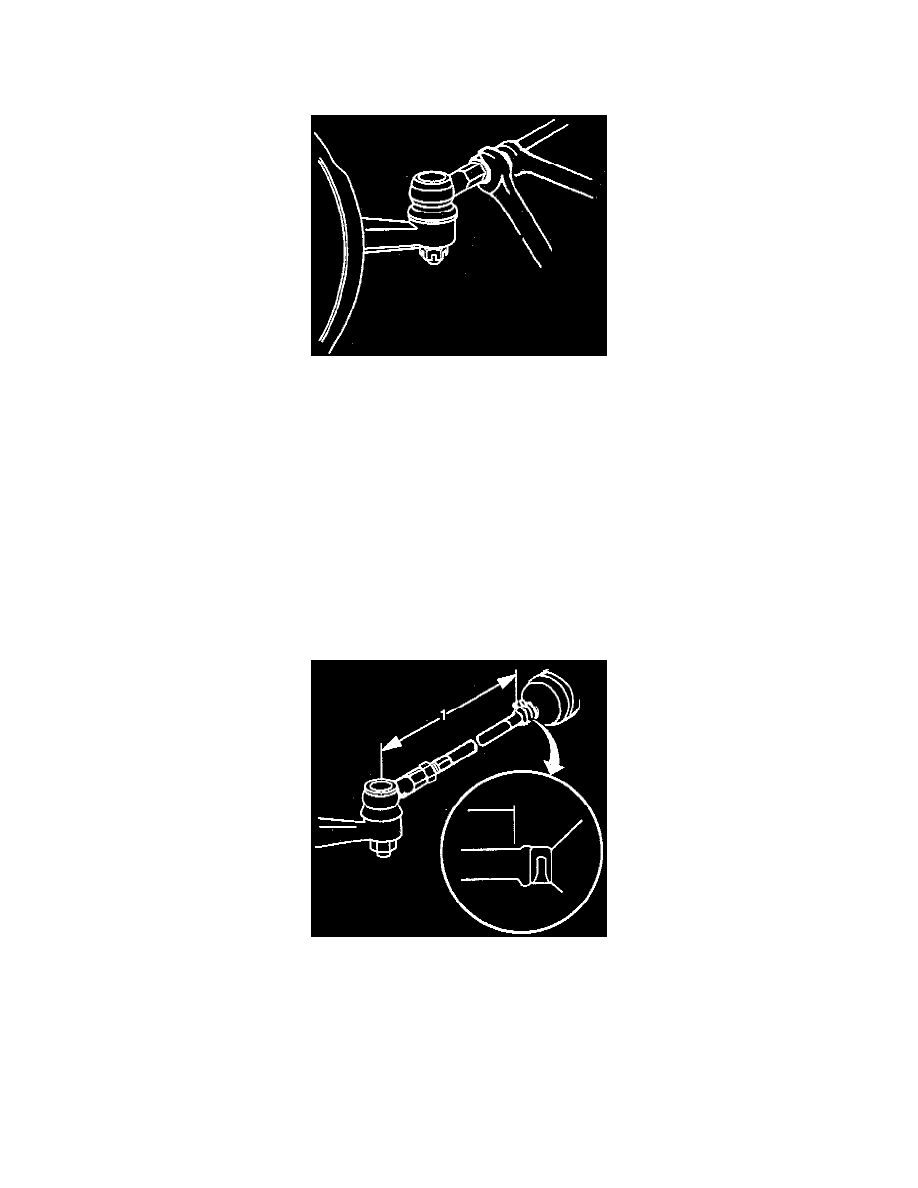Metro L3-061 1.0L VIN 6 TBI (1998)

Alignment: Service and Repair
Front Wheel Alignment
MEASURING FRONT ALIGNMENT ANGLES
Important:
^
Install the alignment equipment following equipment manufacturer's instructions. Measure the alignment angles and record the readings.
^
Jounce the front and rear bumpers three times to normalize suspension prior to measuring the angles.
^
If the caster angles are not within the specified range, inspect for damaged suspension and steering components and replace parts as necessary.
FRONT CAMBER AND CASTER
If camber and caster measurements: do not fall within specifications (camber -0.5 to 1.5° and caster 1.0 to 5.0°), locate the causes first. Damaged,
loose, bent, dented or worn suspension parts should be replaced. Refer to FRONT SUSPENSION. If the problem lies in the body repair the body to,
attain the specifications. Refer to ALIGNMENT CHECKING in UNDERBODY. To prevent possible incorrect reading of camber or caster; move the
vehicle front end up and down a few times (bounce) before inspection. Camber and caster cannot be adjusted on this vehicle
FRONT TOE ADJUSTMENT
1. Adjust the toe by changing the tie rod length.
2. Loosen the boot clamps (small and) and slide off of the boot.
3. Apply a small amount of grease between the tie rods and boot contact points to prevent the boots from becoming twisted.
4. Loosen the right and left tie rod locknuts, then turn right and left tie rods and set the front total toe to 0 to 0.32°.
5. Verify that the right and left tie rods are equal in length (1).
NOTICE: Always use the correct fastener in the proper location. When you replace a fastener, use ONLY the exact part number for that
application. The manufacturer will call out those fasteners that require a replacement after removal. The manufacturer will also call out the
fasteners that require thread lockers or thread sealant. UNLESS OTHERWISE SPECIFIED, do not use supplemental coatings (paints, greases, or
other corrosion inhibitors) on threaded fasteners or fastener joint interfaces. Generally, such coatings adversely affect the fastener torque and joint
clamping force, and may damage the fastener. When you install fasteners, use the correct tightening sequence and specifications. Following these
instructions can help you avoid damage to parts and systems.
Important: Verify that the rack boots are not twisted.
